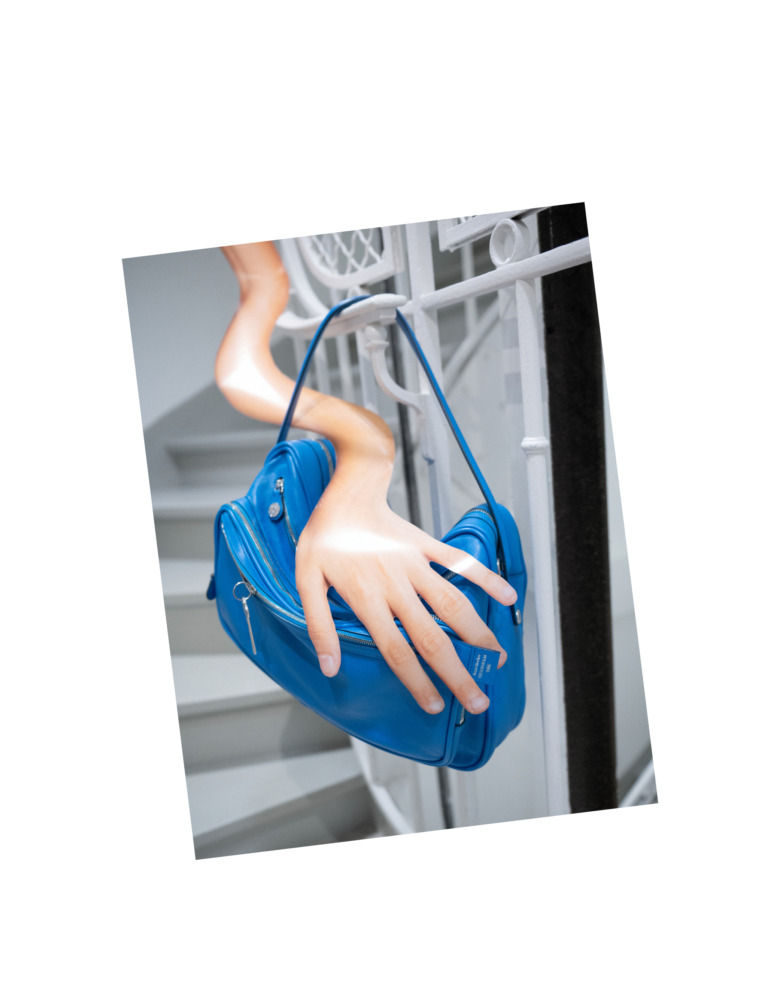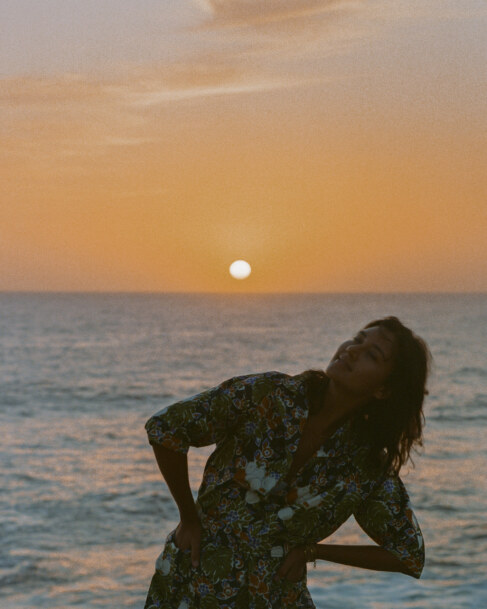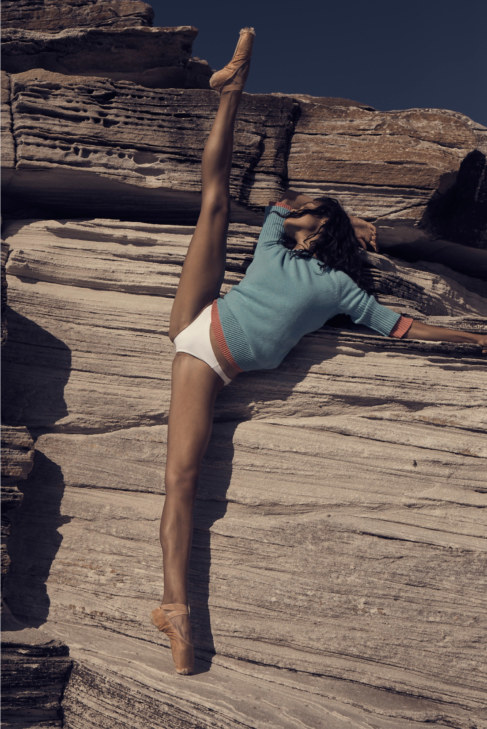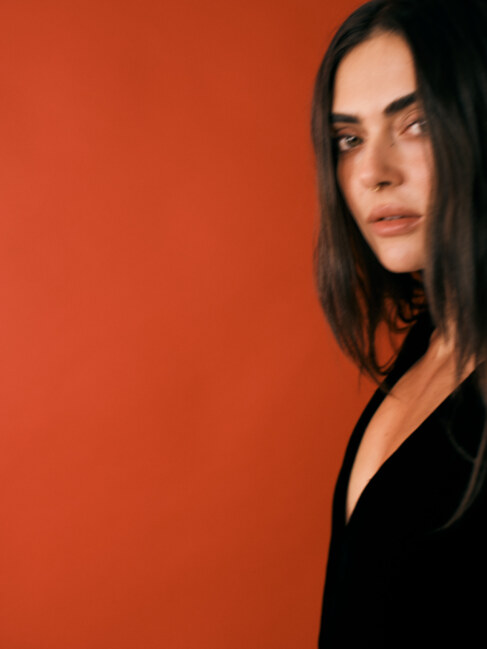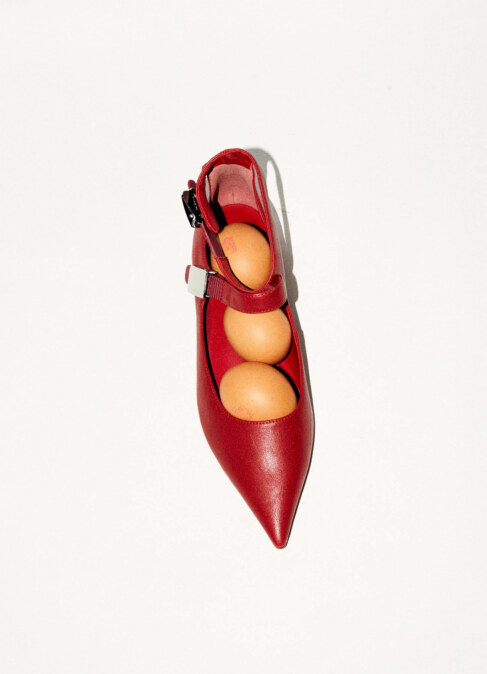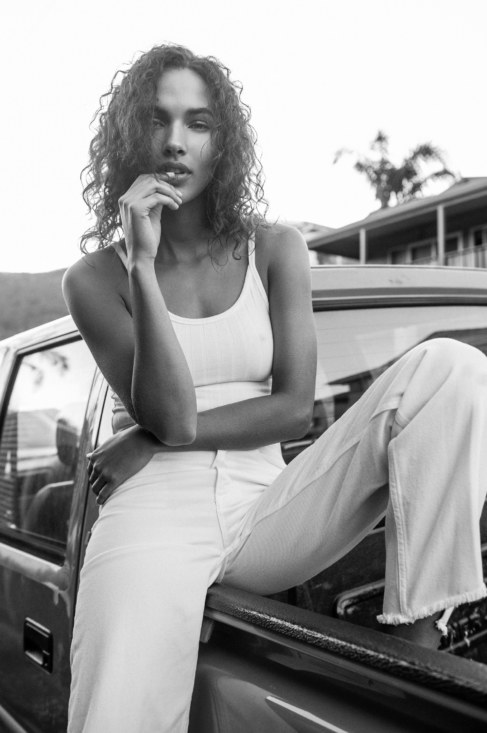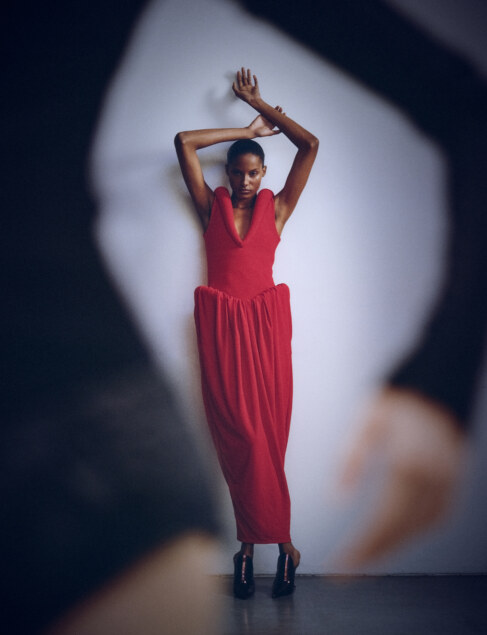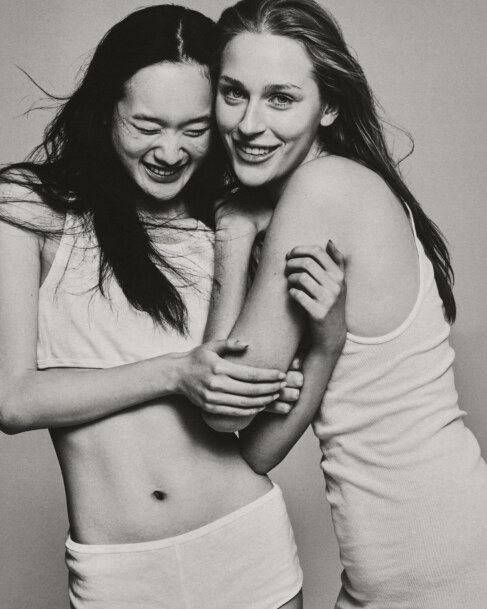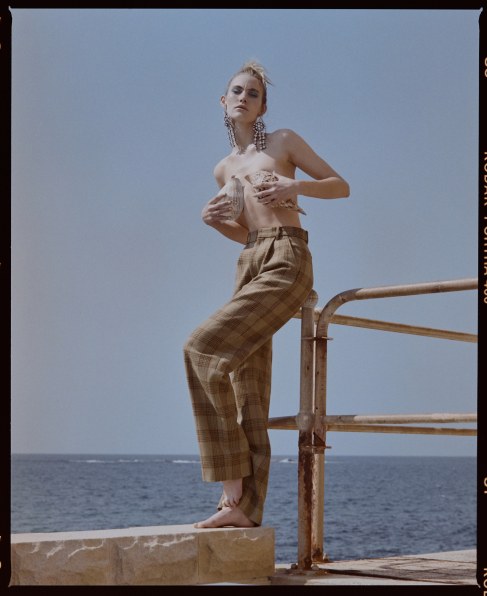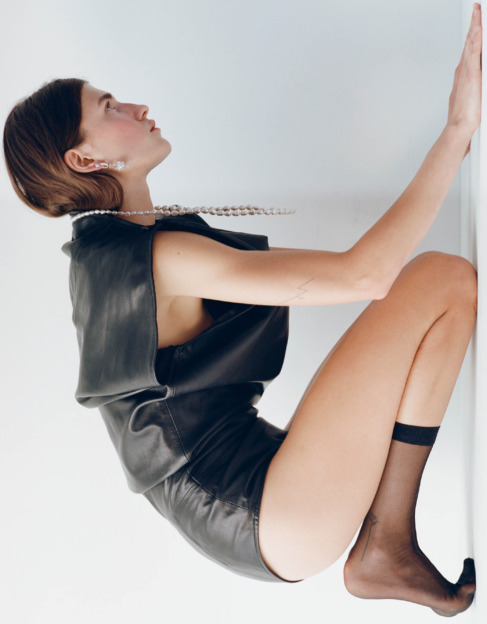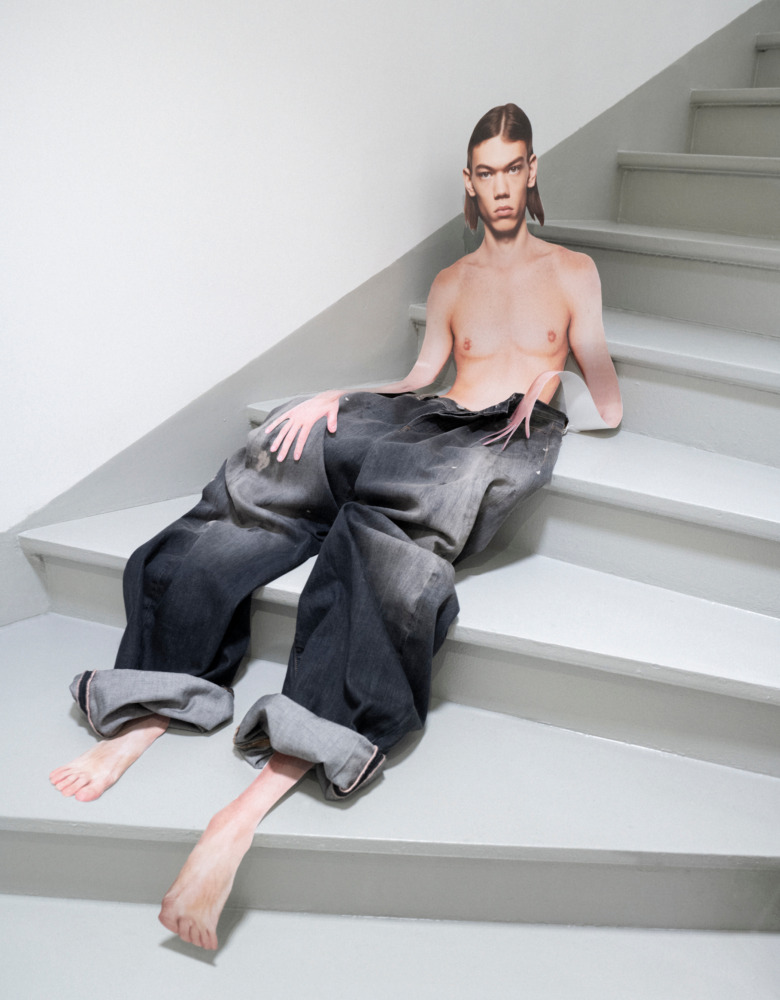
NO BIG DEAL – ACNE STUDIOS’ JONNY JOHANSSON ON NOVEL EXPRESSION
PHOTOGRAPHER: Linus Morales
STYLIST: Teanne Vickers
A.I ARTIST: Kat Stump
WORDS: Divya Bala
In a matter of minutes, just after doors open, the Acne Studios showroom in its Rue des Petites-Écuries headquarters goes from a quiet hum of caterers and press attachés to an all-out clamouring cool crowd. They jostle to take pictures of the new collection, Men’s Autumn 2025: a pair of worker boots engi- neered to look like calf-length trouser cuffs, box- ing-inspired sneakers laced up with silk-satin ribbon, gym shirts for the fictitious Acne Studios ‘Pink Gym’, Rocky-esque sweatsuits, gauzy tromp l’oeil long- sleeves printed with a suit jacket and tie, a pair of mi- cro gym shorts that play peek-a-boo with the built-in briefs its hanging off. In the middle of the room, a den- im capsule of jeans, shirts and jackets with splatters over the shoulders and thighs, like a painter spent a month of work wiping his hands off on them.
Jonny Johansson, Acne Studios co-founder and creative director, has been sitting quietly unnoticed on the globulous, patent-brown couches in the middle of the room, surrounded by his cropped muscle tees and ’80s FiDi power tailoring, inspired by gym bros and finance guys and the incel-rooted ‘Looksmaxxing’ trend on social media, all about the male quest for peak physical optimisation. It’s not a philosophy he follows personally, but there’s a fascination, clearly.
A few minutes into conversation, we realise we are no match for the excitable crowd. We move to an anteroom with gold-painted mouldings – vestiges from the building’s past, a converted private mansion-turned-pharmaceutical-company-turned-Acne HQ as of late last year. We sit on a furniture piece by Austrian artist Lukas Gschwandtner, who Johansson scouted online and placed in charge of designing the set for the Spring/Summer 2025 collection. The room is dot- ted with the shell-encrusted candelabras that decorated the Spring 2023 women’s runway set. Hand- made by craftswoman Sylvie Macmillan, the sculptures are curious – whimsical, even – against the baroque grandeur of the room. I ask Johansson when he last had a belly laugh.
“Yesterday, in a board meeting, because it’s hilarious how the industry is evolving,” he deadpans, wryly. A corner of his lip flickers up, if only for a moment. “I think fashion in general is so serious, so business. The humour has to be there – a bit cheeky. It’s just clothing.” He adds, “It’s very important to me not to be too pretentious because I think fashion can sometimes be a bit too serious. It’s a [form of] self expression, obviously, so it’s serious, but it’s also a way to communicate – and you’re not always serious when you communicate, so I’m up for having a bit of fun.”
Johansson’s brazen approach is perhaps what has kept the buzz around his brand so consistently since 1996, when a 27-year-old Johansson and three colleagues, restless and creatively charged, formed Acne Studios. A creative collective, a playground for its acronym today, ‘Ambition to Create Novel Expression’, the vision was for a label that transcended every part of art and culture. Imagine Warhol’s Factory – an early inspiration of Johansson’s – but through a Scandi lens at the height of IKEA functionality.
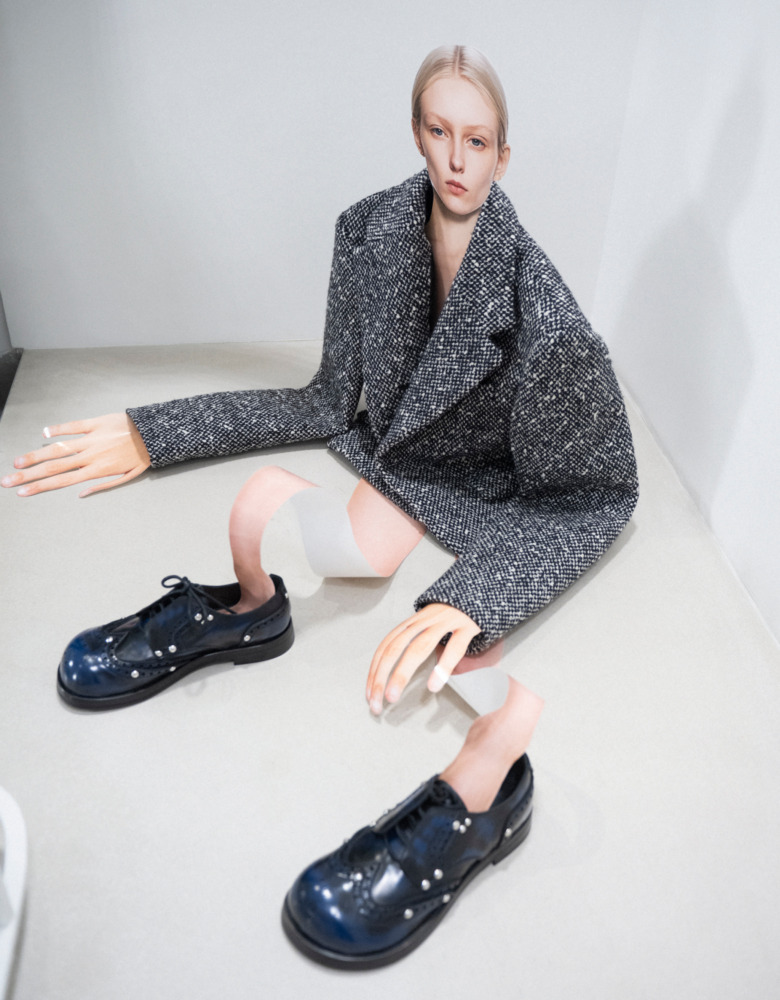
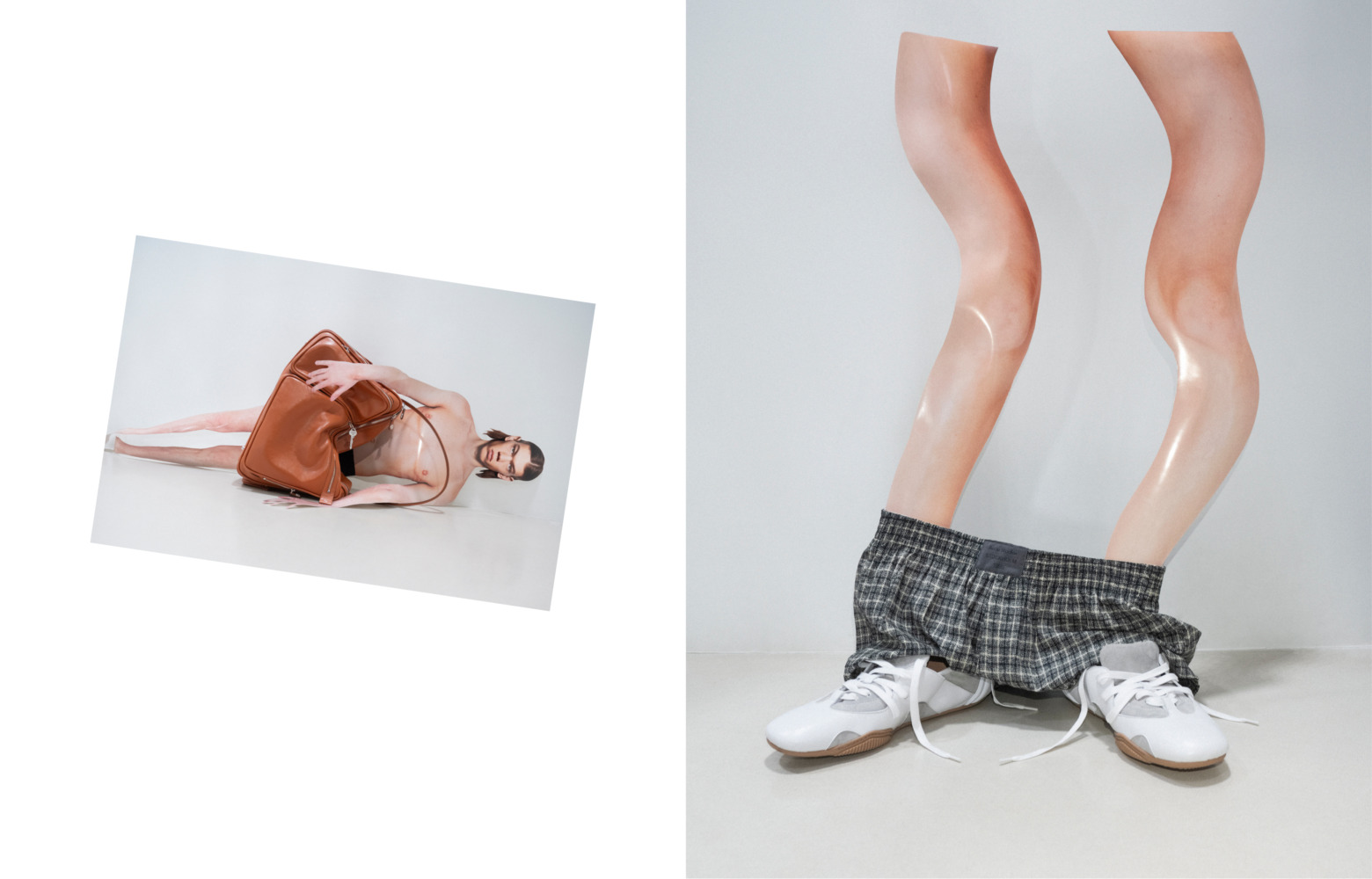
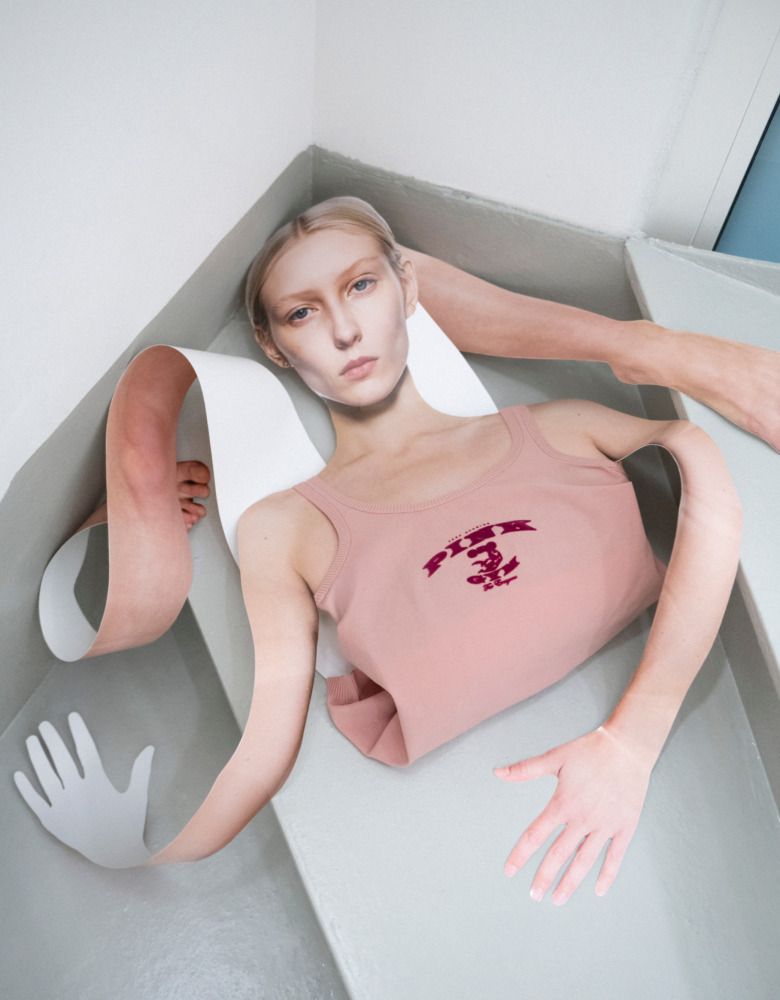
Denim was a starting point – the first run of a few hundred stovepipe jeans with signature red stitch- ing were handed out to friends, families and his creative community for free. In the years to come there were more ‘cult’ pieces – the zippered Pistol boots that inspired a thousand imitations, the shearling coats that continue to fetch more in resale, fluffy mo- hair scarf blankets and rosey-beige shopping bags so ubiquitous that they are said to have inspired the Millennial Pink pantone. There was a couture collaboration – a denim capsule for men and women with the late Alber Elbaz during his celebrated tenure at Lanvin – a toe-dip into perfume with Frederic Malle, graphic design, film production, and a substantial biannual magazine Acne Paper that featured everyone from author Fran Lebowitz and dancer Mikhail Baryshnikov to linguist Noam Chomsky.
In reflecting on favourites from the Acne collection archive, Johansson demurs. “I don’t like any of them,” he says. Surely not? “No, it’s always a failure. You thrive on the idea of making something new.” His creative process is collaborative and communicative, articulated verbally, “designing with his mouth,” as he phrases it, leveraging a careful vocabulary to guide his long-term creative collaborators. The use of scissors and pins becomes a secondary tool.
“I learnt that from Alber Elbaz,” Johansson explains. “When I met him, I was quite young and was just realising that he was a man of words. He could build houses with words. He could build skyscrapers, just placing words on top of each other and I could just see what he wanted to do. So I learnt that trade from him. It’s a skill that I had to refine, the way of talking to reach somebody’s understanding.”
From Swedish folklore and Surrealist references to punk, pop culture, and performance wear, Johansson favours finding inspiration in observing everyday people over the cult of celebrity. “I like to look at people, maybe more than normal,” he admits. “It’s just how somebody is walking or somebody’s hair,” he explains. He builds characters from these observations, like the “Looksmaxx guy” he spotted on the street, transforming real-world inspiration into the starting point for a collection. This plug-in to the average Joe, the gym bro, rather than idealised figures, perhaps explains the en- during power of his vision. Jokes aside, there’s a sense of genuine connection, a feeling that these clothes are made for real people living real lives.
This fascination with human behavior and its visual expression is a driving force behind his work. “I don’t know what I’m focusing on,” he muses. “I’m just doing things.” But even as he creates, there’s a sense of detachment, a recognition that the process is more fulfilling than the final product. “Do I like it myself? It’s always a disappointment,” he confesses, “because it’s always the pro- cess that’s interesting. How is this young person evolving? And then it’s over and I’m already on to the next.”
